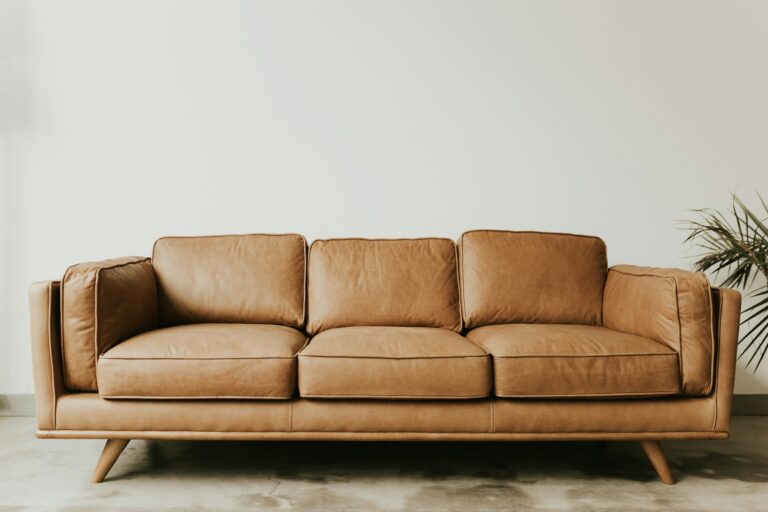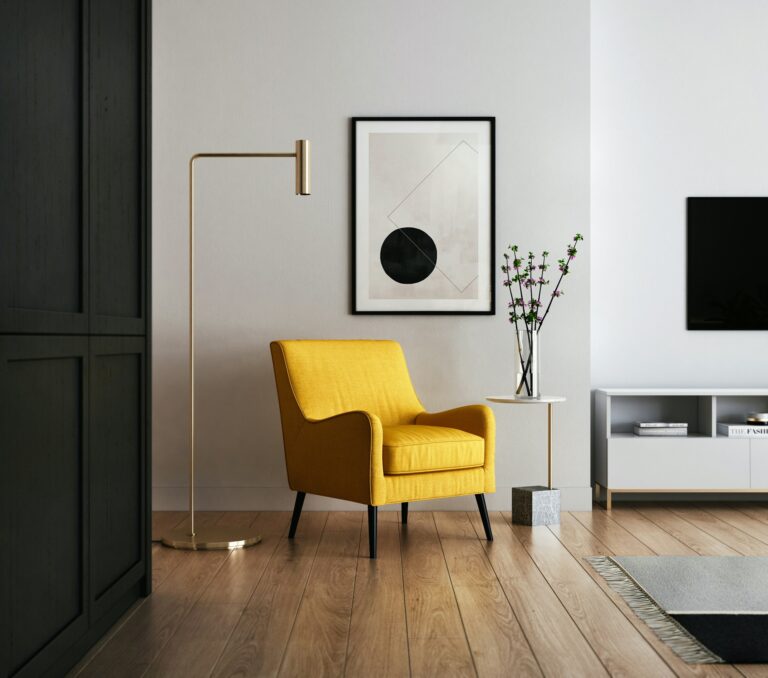Sustainable Furniture: How Eco-Friendly Choices are Shaping the Future of Interior Design
As sustainability becomes an increasing concern in every aspect of our lives, the furniture industry is no exception. More and more consumers are looking for ways to reduce their environmental impact, and one of the most effective ways to do so is by choosing sustainable, eco-friendly furniture. Sustainable furniture not only benefits the environment but also plays a key role in creating stylish, functional spaces. In this blog, we explore how sustainable furniture is shaping the future of interior design and why making eco-conscious choices is beneficial for both your home and the planet.
What is Sustainable Furniture?
Sustainable furniture refers to pieces made using materials that are responsibly sourced, often from renewable resources, and crafted in a way that minimizes environmental impact. This includes everything from the wood used in construction to the fabrics chosen for upholstery. Sustainable furniture is also designed with longevity in mind, ensuring that it lasts for years, reducing the need for replacements and minimizing waste.
Sustainable design prioritizes durability, quality, and eco-friendly materials to ensure that furniture is both beautiful and functional while supporting a healthier planet.
The Environmental Benefits of Sustainable Furniture
- Reduced Carbon Footprint
The production of traditional furniture often involves high energy consumption and pollution. Sustainable furniture is made from responsibly sourced materials and processed with minimal environmental impact. For instance, wood that is sustainably harvested helps preserve forests and reduce deforestation, which leads to improved biodiversity and soil conservation. - Longer Lifespan and Durability
Sustainable furniture is built to last, often using high-quality materials that withstand the test of time. By investing in durable pieces, such as well-constructed sofas or sturdy dining tables, you avoid the need to frequently replace items, ultimately reducing waste and contributing to a more sustainable living environment. - Non-Toxic Materials
Conventional furniture often contains harmful chemicals such as formaldehyde or flame retardants that can negatively impact both the environment and your health. Sustainable furniture, on the other hand, is crafted using natural finishes, organic fabrics, and safer, non-toxic materials. This shift helps create healthier indoor environments, free from pollutants and chemicals that are commonly found in traditional furniture. - Less Waste and Pollution
Many sustainable furniture brands focus on reducing waste by using upcycled or repurposed materials. These practices help divert materials from landfills and lower the demand for virgin resources. In addition, more efficient production methods are employed to minimize pollution, leading to a smaller carbon footprint for each piece of furniture.
Sustainable Materials in Furniture Design
The materials used in the production of sustainable furniture play a crucial role in its eco-friendliness. Here are some of the most common materials used in eco-conscious furniture design:
- Wood: Responsibly sourced wood, such as from FSC-certified forests, ensures that the material is harvested in a sustainable manner. Reclaimed wood is another excellent choice, offering a second life to materials that would otherwise go to waste.
- Bamboo: As a fast-growing renewable resource, bamboo is a popular sustainable material due to its durability and minimal environmental impact. It is a versatile option for everything from coffee tables to sideboards.
- Recycled Materials: Sustainable furniture often incorporates recycled materials like reclaimed wood, repurposed metal, or even recycled plastics. This helps reduce the need for new raw materials, decreasing environmental harm and lowering waste.
- Natural Fabrics: Traditional upholstered furniture is often made with synthetic materials derived from petroleum, but sustainable furniture offers alternatives such as organic cotton, linen, hemp, and wool. These natural fibers are not only eco-friendly but also offer durability and comfort.
The Benefits of Choosing Sustainable Furniture for Your Home
- A Positive Impact on the Environment
Choosing sustainable furniture directly contributes to reducing the environmental impact of furniture production. Whether through supporting responsible forestry practices, reducing chemical exposure, or utilizing recycled materials, every eco-conscious choice makes a difference in the preservation of natural resources and ecosystems. - Healthier Indoor Environment
Sustainable furniture is often made without harmful chemicals, ensuring a healthier living environment. Non-toxic materials such as organic fabrics and low-VOC finishes improve indoor air quality, which is especially important for homes with children or individuals with sensitivities. - Aesthetic and Timeless Appeal
Sustainable furniture is often designed with longevity and style in mind. Many pieces feature timeless designs and high-quality craftsmanship that age beautifully, meaning they will continue to enhance your home’s aesthetic for years. Sustainable furniture isn’t about following fleeting trends but creating enduring, elegant pieces that suit a variety of interior styles. - Supporting Ethical Brands
By investing in sustainable furniture, you are supporting companies and artisans who prioritize ethical sourcing, fair labor practices, and responsible production methods. Choosing eco-conscious furniture aligns your purchasing decisions with values that promote social and environmental responsibility.
Sustainable Practices in Furniture Design
The movement toward sustainable furniture is not just about the materials used; it’s also about the processes that go into creating each piece. Here are some common sustainable practices in furniture design:
- Low-Impact Manufacturing: Sustainable furniture makers often use energy-efficient processes and limit waste by utilizing local materials and reducing transportation-related emissions.
- Modular and Multi-Functional Designs: Many sustainable furniture designs embrace versatility, offering pieces that can be customized, adapted, or repurposed. For example, a modular sofa system can be rearranged as needed, and multi-functional pieces, like storage benches or convertible beds, maximize space and reduce the need for additional furniture.
- Durability Over Disposable: Sustainable furniture emphasizes quality craftsmanship and durable materials, meaning fewer items need to be replaced over time. This longevity is key to reducing the overall consumption of resources and preventing furniture from ending up in landfills.
Final Thoughts
Sustainable furniture is not just a trend—it’s an essential part of a larger movement toward environmental responsibility and conscious living. By choosing eco-friendly furniture, you are making a positive impact on the environment, promoting healthier living spaces, and investing in quality pieces that will last for years. With the growing availability of sustainable options, it’s easier than ever to furnish your home in a way that aligns with your values and supports a more sustainable future.
As more people embrace eco-friendly choices in home design, the future of furniture is brighter, more ethical, and more sustainable. Start making conscious, eco-friendly furniture decisions today, and be a part of this transformative movement in interior design.



